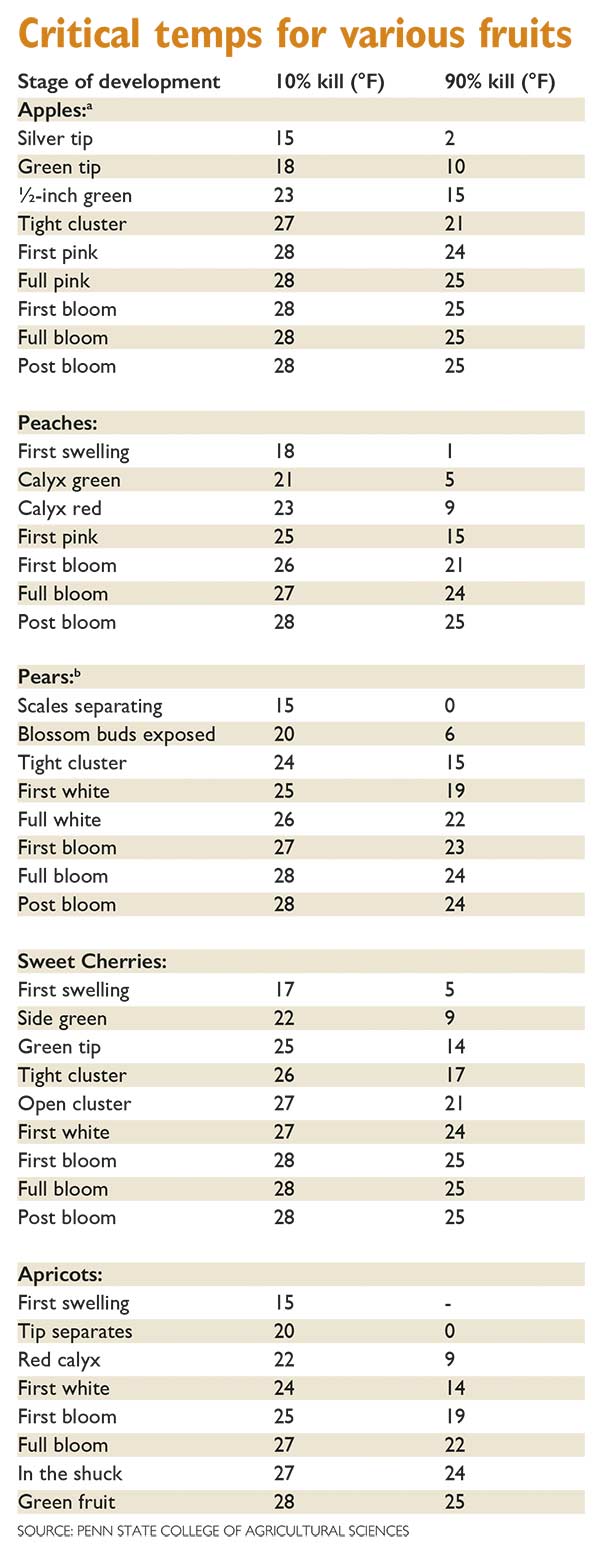The East Coast is experiencing a second round of winter, and the anticipated freezing temperatures could affect some fruit growers in the region.
As a reminder for growers about bud hardiness and injury, Penn State University Extension offers the following fact sheet for growers about critical temperatures for various fruits. Read: Critical Temperatures for Various Fruits.
The temperature at which fruit buds are injured depends primarily on their stage of development. As flowers begin to swell and expand into blossoms, they become less resistant to freeze injury.
Not all blossoms on a tree are equally tender. Resistance to freeze injury varies within trees as it does between orchards, cultivars, and crops. Buds that develop slowly tend to be more resistant.
As a result, some buds are usually killed at higher temperatures, while others are resistant at much lower temperatures.
The table below shows the average temperatures required to kill 10 percent and 90 percent of buds if they are exposed for 30 minutes.
Consideration should also be given to weather conditions preceding cold nights. Prolonged cool weather tends to increase bud hardiness during the early stages of bud development.

a.For Red Delicious. Golden Delicious and Winesap are approximately 1 degree hardier. Rome Beauty is 2 degrees hardier, except after petal fall when all cultivars are equally tender.
b. For Bartlett. D’Anjou is similar but may bloom earlier and therefore may be more tender than Bartlett at the same date.
Source: Penn State Tree Fruit Production Guide. (Updated January 2016). Adapted from 1989 Spray Guide for Tree Fruits in Eastern Washington. Bulletin EBO419. E. H. Beers, coordinator.
For more information, contact Robert Crassweller, professor of tree fruit, at rmc7@psu.edu or (814) 863-6163.
– by Dave Weinstock






Leave A Comment